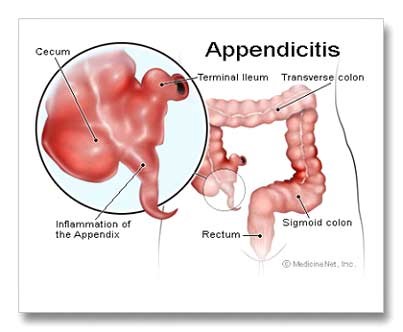- UGF2,3 Subhash Complex, Tulsidas Marg, opp. Charak Diagnostics Mandi, Chowk, Lucknow, Uttar Pradesh 226003
- Emergency Call: 09794540005 , 09919194111
Laparoscopic Appendicectomy
Laparoscopic Appendicectomy
Appendix is a small pouch attached to the beginning of the large intestine. Appendicitis is inflammation of the appendix. It is one of the most common causes of emergency abdominal surgery.

Appendicitis Causes
It usually occurs when the appendix becomes blocked by stool, a foreign object, or rarely, a tumor.
Appendicitis Symptoms
Typically, the first symptom is pain around the navel. The pain may be vague at first, but becomes increasingly sharp and severe. Patient may have reduced appetite, nausea, vomiting, and a low-grade fever. As the inflammation in the appendix increases, the pain tends to move into right lower abdomen and focuses directly above the appendix at a place called McBurney's point.

If the appendix ruptures, the pain may lessen briefly and patient may feel better. However, once the lining of the abdominal cavity becomes inflamed and infected (a condition called peritonitis), the pain gets worse and patient become sicker. The abdominal pain may be worse when walking or coughing. Patient may prefer to lie still because sudden movement causes pain.
Later symptoms include Chills, Constipation, Diarrhoea, Fever, Loss of appetite, Nausea, Shaking, Vomiting.
Diagnosis of Appendicitis
- History
- Physical Examination
- Abdominal Ultrasound
- Abdominal CT
Appendicitis Treatment
In uncomplicated case, the appendix is removed - appendectomy.
If a CT scan shows that there is an abscess from a ruptured appendix, patient is treated for infection and appendix is removed after the infection and inflammation have gone away.
Advantages of Laparoscopic Appendectomy
Common advantages are :
- Less postoperative pain.
- May shorten hospital stay.
- May result in a quicker return to bowel function.
- Quicker return to normal activity.
- Better cosmetic results.


